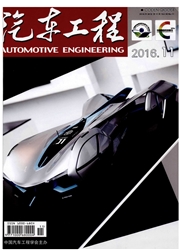
欢迎您!东篱公司
退出

 中文摘要:
中文摘要:
在50百分位HYBRID Ⅲ模型的基础上引入了HBM—neck人体颈部有限元模型,建立了后碰撞的有限元仿真模型,研究了后碰撞中人体颈部的动力学响应过程和座椅特性对颈部损伤的影响。结果表明,HBM-neck人体颈部模型可以很好地预测后碰撞中颈部的损伤风险。座椅结构对颈部损伤有很大影响,装配位置良好的头枕和通过可变形调角器提高座椅吸能性能可有效地减小颈部软组织的损伤。
 英文摘要:
英文摘要:
By incorporating a HBM-neck FE model for human neck into the 50th percentile Hybrid Ⅲ dummy model, a FE model for rear impact is built. A simulation is performed to investigate the dynamics response process of human neck and the influence of seat characteristics on neck injuries during rear impact. The results show that the HBM-neck model can well predict the neck injury risk in rear impacts and that seat structure has great influence on neck injury.
 同期刊论文项目
同期刊论文项目
 同项目期刊论文
同项目期刊论文
 期刊信息
期刊信息
